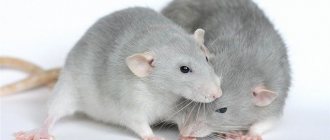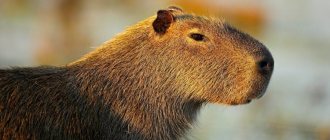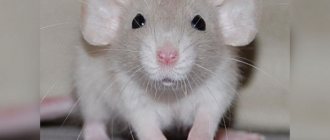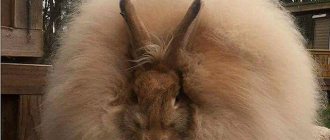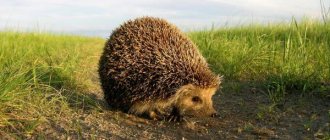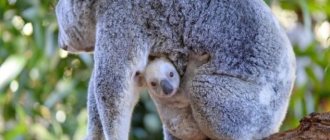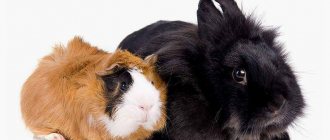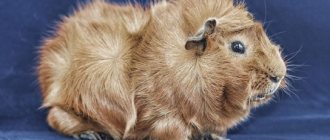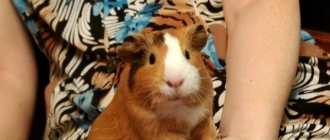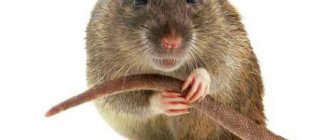Rodents (Rodentia) are a group of mammals that numbers more than 2 thousand living species. Distinctive features of rodents are the upper and lower pairs of constantly growing rootless incisors. Rodents are the largest order in the class of mammals.
As evidenced by fossils, the evolutionary history of rodents began in North America, 56 million years ago, during the late Paleocene era. However, some species are thought to have originated in Eurasia, so the age of the order Rodentia is certainly older.
Origin
Rodents arose about 60 million years ago. Their ancestors, most likely, were small omnivorous animals similar to insectivores. Fossil remains of rodents, known from the Lower Paleocene in the New World and from the Lower Eocene in the Old World, belong to already quite specialized forms.
The origin of the order can be assumed in the Cretaceous or even in the Upper Jurassic. Family relationships with other orders of mammals are not clear. The closest related group should be considered lagomorphs, which most consider to be an independent order.
At the same time, ungulates were formed, which were also herbivorous, but larger. Therefore, rodents, in order to avoid competition, remained small. The smallest of them (for example, the tiny mouse) are close to the size minimum of the class of mammals - they weigh only 5-10 g, and the largest reach only 50-60 kg. Thus, only insectivores and bats are on average smaller than rodents.
It is interesting that in this order, as in the class of mammals as a whole, the largest sizes are achieved by animals leading a semi-aquatic lifestyle - beavers and capybaras.
Dimensions
Capybaras
The rodent order has a varied range of body sizes. One of the smallest rodents is the swamp hamster (Delanymys brooksi), common in the swamps and mountain forests of Africa. It weighs from 5 to 7 grams and has a length of 5 to 6 cm. The largest rodent is the capybara (Hydrochoerus hydrochaeris) from Central and South America, which weighs from 35 to 66 kg and has a height at the withers of 50 to 60 cm, and body length from 100 to 135 cm. Some extinct species were even larger, reaching the size of a black bear or a small rhinoceros. The largest rodent (Josephoartigasia monesi), lived about two to four million years ago, during the Pleistocene and Pliocene eras; According to some estimates, it was about 3 meters long and weighed almost 1000 kg.
Features of the appearance and structure of rodents
Most rodents are small and weigh no more than 100 grams. There are relatively few large species, among which the capybara stands out: its weight can reach 66 kg
The giant among rodents is the capybara. Weighs 10 thousand times more than a mouse.
And the smallest rodent is the dwarf jerboa, which weighs only 3 grams.
Most rodents are stocky, dense creatures with short legs and a tail. In South America, some species have acquired elongated limbs, suitable for living on grassy plains (agouti and paqui).
Agouti
Distinctive features of rodents are the upper and lower pairs of highly developed, very sharp, constantly growing rootless incisors. With their help, the animal can chew through the peel or shell to get to the food hidden inside. They do not have fangs, but they have a solid set of molars, with which they can thoroughly chew any food. There is a large space between the incisors and molars - the diastema: the lips can be retracted there to protect the mouth from inedible fragments separated by the incisors.
The majority of the total number of teeth does not exceed 22. The only exception is the shade lover living in Central and East Africa - the owner of 28 teeth.
Because rodents eat roughage, their incisors have exposed roots and grow throughout their lives. They are constantly worn off by the incisors of the lower jaw.
The structure of the jaw muscles of rodents is interesting. The main one of these muscles is the chewing muscle, which not only brings the lower jaw to the upper jaw, but also moves it forward in order to ensure the ability to chew. In extinct Paleocene rodents, the masseter muscle was small and weakly extended to the front of the skull. In squirrels, the outer part of the masticatory muscle extends onto the front of the skull in front of the orbit, while the inner part is short and is involved only in adducting the lower jaw. In mouse-like animals, both parts of the masticatory muscle (external and internal) protrude far forward, ensuring the greatest efficiency of gnawing movements.
Almost all rodents are plantigrade and move by resting on the entire surface of their feet and hands. Their toes end in claws, which may be elongated in some burrowing species (Cape mole rat). Some South American species (agoutis) are adapted for running and digitigrade - when moving they rely only on the tips of their fingers. Their claws are like hooves. Others, adapted to a semi-aquatic lifestyle (beavers), have webbed feet. Although most members of the order are not very fast-footed, desert-dwelling bag hoppers and jerboas can rush across the sand at a speed of about 50 km/h!
The rodent tail is a highly variable anatomical structure. So, the beaver’s is wide and flat and is designed for fast swimming underwater. In the muskrat it is compressed laterally and is used as a rudder. Kangaroo mice, sac hoppers and jerboas have a long tail, sometimes with a tuft of hair at the end, and use it as a balance. In a few species (the little mouse), the tail is prehensile and is used as a fifth limb. In arboreal gliding species (the southern flying squirrel), the tail is bushy and provides both balance and additional support. Some hamsters have a very short tail, barely noticeable, and most pig-like species do not have a tail at all.
Rodents have a relatively large cecum (appendix), containing a rich bacterial flora, which ensures the breakdown of cellulose.
Representatives of at least three families (hamsters, gophers, and sacs) have cheek pouches. Folds of skin bordered by fur extend inward from the corners of the mouth, sometimes reaching shoulder level. Animals can turn them inside out for cleaning. The bags are used to carry food and allow the animals to create impressive reserves. For example, an ordinary hamster can sometimes store up to 90 kg of supplies in its pantries!
Rodents are smart and can solve simple problems to get food. They easily learn to avoid baits containing fast-acting poison.
Their sense of smell and hearing are quite well developed. Nocturnal species have large eyes. In addition to this, all rodents are equipped with long sensitive whiskers (vibrissae).
Rat
Body Features
- Stocky body
- Shorter tail
- The tail is covered with husks and fine, light hairs
- The head is proportional to the body
- "Bare feet" with fine, light hairs
Color
Natural colors for rats are gray, grayish-brown, and black. But you can also use a color scheme
Head
- Rounded muzzle
- Small ears without hair
- Small eyes in relation to the head
Evolution of rodents
From an evolutionary point of view, rodents are a young group that retains many unrealized areas of genetic variability.
The oldest remains of rodents date back to the end of the Paleocene era (57 million years ago), and by this time all the main features of the order had already been formed.
The oldest species presumably belonged to the extinct family of squirrels (Paramyidae).
During the Eocene epoch (55-34 million years ago), the diversity of rodents increased rapidly, and by its end, jumping, burrowing and running forms probably arose.
At the Eocene-Oligocene boundary (34 million years ago), many recognizable families already inhabited North America, Europe and Asia, and during the Miocene (about 20 million years ago), most of the living families were formed.
Probably the most significant event in the evolution of rodents was the emergence of the Muridae family in Europe at the end of the Miocene (about 8 million years ago). In the Pliocene, they probably penetrated through the island of Timor to Australia, where they underwent rapid evolutionary changes. At the same time, mice populated South America, penetrating there from the north along the isthmus that connected it with North America, resulting in the explosive evolution of American hamsters in South America.
Distribution and habitat
Rodents are a widespread order of mammals. They are found in most terrestrial habitats and are absent only from Antarctica, New Zealand and some oceanic islands. Ecologically they are incredibly diverse. Some species spend their entire lives on the surface of the earth, in the forest floor or tree canopy; others rarely emerge from the ground. Some species are primarily aquatic, while others are adapted to live in deserts.
Chinchilla
Body Features
- Stocky body
- Soft, fine fur.
- Medium length fluffy tail
- Large head compared to body
- 4 toes on all paws, with “shoots”
Color
Traditionally, chinchillas are gray with a lighter underpart and a darker back. They can also be black, beige or almost white.
Head
- Rounded muzzle
- Very large ears without hair
- Large eyes in relation to the head
- Very long, straight mustache
- "Sleepy Look"
Classification
In total, as of 2005, 2277 species of rodents were described. In the past, they were divided into three suborders based on the structure of the jaw muscles. Today there are 5 suborders and more than 28 families.
Suborder Myomorpha
Consists of eight families:
- mouse;
- mouseworms;
- jerboas;
- mole rats;
- spinaceae;
- hamsters;
- hareliphamsters;
- mouse-hamster.
Almost 2/3 of all rodent species belong to one single mouse family (Muridae). This family contains 1,303 known species, and this number is constantly increasing as a result of new discoveries. Murids are distributed throughout the world, including Australia and New Guinea, where they are the only land-based placental mammals (not counting the recently introduced rabbits). They represent the family mainly of mice and rats.
Field mouse (Apodemus agranius)
Representatives of the mole rat family (Spalacidae) are most adapted to life underground. Their eyes are completely hidden under the skin, and their ears and tail are absent.
Common mole rat (Spalax microphthalmus)
To a greater or lesser extent, all representatives of the jerboa family (Dipodidae) are adapted for movement by jumping or rebound running.
Long-eared jerboa (Euchoreutes naso)
Suborder Squirrel-like (Sciuromorpha)
Consists of three families:
- squirrel;
- aplodontiaceae;
- dormouse.
The squirrel family (Sciuridae) is the second most diverse after the mouse family (including 273 species). Representatives of squirrels are distributed throughout Europe, Africa, North and South America. The common squirrel is its most famous representative. This also includes gophers, chipmunks and marmots.
Common squirrel (Sciurus vulgaris)
Dormice (Gliridae) are a cross between mice and squirrels in appearance. They are the only rodents that do not have a cecum, indicating a low amount of cellulose in their diet.
Suborder Beavers (Castorimorpha)
Presented in three families:
- beavers;
- gopheraceae;
- pouchhopper.
Beavers (Castoridae) are large rodents with cheek pouches and strong limbs. The most famous, of course, is the beaver. It is famous primarily for the fact that it can change the landscape in its habitat. Using powerful cutters, he cuts down trees, building dams and huts from this material.
Representatives of the gopher family (Geomyidae) spend most of their lives underground in their own burrow system. Outwardly they look like moles.
Plains gopher (Geomys bursarius)
Pouchhopper rodents (Heteromyidae) are nocturnal burrowers that inhabit diverse landscapes in the Americas.
Suborder Porcupines (Hystricomorpha)
This suborder unites about 300 species in 18 families (agoutiaceae, porcupines, pigs, mole rats, chinchillas, rock rats, etc.).
Most of them are large rodents that live within South and Central America. Among them, the most famous are porcupines, guinea pigs, mole rats, nutria, chinchillas, etc.
North American porcupine (Erethizon dorsatum)
Suborder Spiketails (Anomaluromorpha)
Includes 2 families:
- long-legged;
- spiny-tailed.
The first family (Pedetidae) is represented by one species - the long-legged, living on the African plains. This animal looks like a miniature kangaroo.
Strider (Pedetes capensis)
Spiketails (Anomaluridae) from the rain forests of Africa are similar in appearance to squirrels, but are very distantly related to them.
Squirrel Spiketail (Zenkerella insignis)
[edit] Lifestyle
Rodents live in a wide variety of landscape and climatic conditions, from sea level to highlands. They are terrestrial, arboreal or semi-aquatic animals. Some species are capable of planning. Specialized desert rodents are characterized by locomotion on their hind legs (usually by ricocheting jumps).
Among rodents, there are species that are only nocturnal, feeding only during the daylight hours and active at any time of the day.
Rodents differ in lifestyle very clearly and very diversely: from terrestrial (mice, rats) to entirely underground (mole rats, zokor) and semi-aquatic (beavers, capybaras) and from running (gerbils) and jumping (jerboas, striders) to climbing (squirrels) , baby mice). There are forms adapted for gliding flight (flying squirrels).
Many rodents dig holes for themselves in the ground.
Many species go into deep hibernation during the winter (gophers, marmots, bobcats, dormouse). Animals leading a social life, some erect extensive structures together: for example, beavers, the American musk rat, and the muskrat.
The lifespan of small rodents is 1.5-2 years, large ones (marmots, beavers) - 4-7 years. Puberty in small rodents occurs at 2-3 months, in large rodents - in the 2nd year of life.
[edit] Food
The primary food of rodents is vegetation: leaves, young shoots, roots, grains, fruits, even bark and wood. But most species, on occasion, do not disdain animal substances (mice and rats are omnivores, squirrels eat bird eggs).
There are also fish-eating representatives.
Many species' diet includes animal food (mainly insects), some are specialized predators (in particular, large semi-aquatic rats and hamsters feed on fish).
For the winter, some species collect food supplies in underground burrows (chipmunk, Tamias, in Siberia and America).
[edit] Reproduction
Rodents are a group that has thrived in the modern geological era. The ability to reproduce quickly in very diverse living conditions determines a faster rate of evolution than in other orders.
Most rodents, especially small ones, are characterized by high fertility. Several (up to 3-6) litters per year of 8-14 cubs each and early maturation at the age of 2-3 months.
On the other hand, most large rodents will give birth to 1-3 babies once a year. In some rodents (many mice, voles, squirrels), newborns are underdeveloped, while in others (for example, spiny mice), they are able to follow the female almost immediately after birth. The former are characterized by significant fluctuations in numbers.
Rodent lifestyle
Many rodents live in families or colonies, often very large ones. For example, the population of prairie dog colonies can reach 5 thousand individuals. A solitary lifestyle is more typical for species that can protect their food resources from competitors. Among them are inhabitants of dry steppes and deserts - hamsters and some desert mice.
Possessing acute senses, rodents communicate using hearing, vision and smell. Voice plays an important role in communication. For example, North American chipmunk squirrels and ground squirrels use a wide range of calls to alert neighbors to their presence and to defend territory. Their repertoire also includes special alarm signals used when a predator appears. In many other rodents, the frequency of sounds produced is beyond the range of human perception (about 45 kHz). In addition, they communicate through scent substances produced by various glands. Males usually have a stronger odor than females.
Hamster
Body Features
- Stocky body
- Proportional head
- Short tail
- Little paws
- Feet may be bare or furry
Color
The common Syrian hamster is light tan, but there are many other color variations for them.
Head
- Rounded muzzle
- Proportional eyes
- Small ears
Nutrition
Most rodents eat a variety of plant foods, from leaves to fruits, sometimes supplementing their diet with small invertebrates such as spiders and grasshoppers. Some species (the field vole) feed on the bark of woody plants during periods of food shortage. Toxic substances contained in the bark are neutralized in the stomach of these animals by special enzymes, which allows the animals to survive lack of food.
Several species are specialist predators, such as the Australian water rat, which feeds on small fish, shellfish and frogs.
Reproduction
In most species, pregnancy lasts only 19-21 days, and the next mating occurs 2 days after birth. Cubs become sexually mature at 6 weeks of age.
Theoretically, a pair of mice could produce 500 offspring in 21 weeks.
Under suitable conditions, the number of rodents can increase to 1000-2000 per 1 hectare.
All stages of rodent reproduction - from attracting a sexual partner to mating and successfully raising young - are influenced by odor signals.
Skeleton
The animal's skeletal system performs both supporting and protective functions, and the rabbit's skeleton consists of more than two hundred bones. So, in an adult rabbit, bones occupy about ten percent of the body weight, and in a baby rabbit, up to fifteen percent of the body weight. This entire system is connected to each other by cartilage, muscle tissue and tendons.
In rabbits of meat and meat-skin breeds, bones occupy less volume relative to their weight.
Peripheral
This group includes:
- Forepaws (extremities of the sternum). Consist of the forearm, shoulder bones, belt and hands. Each hand has a certain number of bones: five metacarpals and five carpals (fingers).
- Hind legs (pelvic, lower limbs). They consist of the pelvis itself, the ilium, the ischium, the thighs, and the feet (four fingers and three phalanges).
The bones of the sternum and the belt are connected to each other by the collarbone, which allows animals to jump. The vertebral section of these individuals is a weak point, as are the weightless bones of the limbs, so rabbits often suffer injuries to the back or legs.
Axial
This group includes the bones of the skull and spine:
- Skull box. The facial bones are movable, connected to each other by peculiar sutures. The brain section includes the following bones: the temporal bone, the occipital bone, and the parietal bone. The facial section includes: the bone of the upper jaw, as well as the nasal, palatine, and lacrimal bones. The skull of rabbits is oblong, like that of most small mammals. The main part is occupied by the organs of the respiratory and digestive systems.
- Body (chest bone, spinal column, ribs). The spine of an adult rabbit consists of several parts, which we will consider in more detail. Its plasticity is provided by cartilage pads that act as shock absorbers. They connect with each other.
The widest spine is found in meat breeds. The importance of such characteristics allows the farmer to make the correct selection of animals for breeding.
Rodents are under threat
The ability of rodents to quickly reproduce and colonize all kinds of habitats makes these mammals very important in many ecosystems. They also play an important role in human life.
But not all rodent species thrive. At least 50 species have gone extinct over the past two centuries, and more than 350 more may soon share their fate.
The 78 species most at risk are small, isolated populations that continue to decline. For some, such as the Margarita kangaroo and the Brazilian tree hamster, habitat protection offers hope for survival. For others, such as the reef mosaic rat, there is no hope - in 2021, a commission consisting of members of the Queensland Department of Environment and Heritage concluded that the animal became extinct due to frequent flooding on the flat sandy island where it lived.
About 100 species of rodents that are under threat of extermination are at somewhat lower risk. Their populations of up to 2,500 individuals are often divided into several endangered parts. For example, two species of Central American agouti and 6 species of Mexican forest hamsters fall into this category.
red squirrel
Body Features
- Slender body
- Bent paws
- Strong hindquarters
- Long, fluffy, slightly flat tail
- Small head compared to body
Color
The color varies depending on the species, but the skin is usually red, brown, or reddish-gray with a white underside.
Head
- Slightly pointed muzzle
- Pointed ears
- Large eyes compared to head.
Disease carriers
Rodents living in close proximity to humans, whether pets or wild animals, are carriers of diseases. For example, rodents are traditional sources of listeria infection. In addition, proteins in the urine or blood serum of rodents can cause allergies. Chipmunks are natural carriers of at least 8 pathogens of dangerous diseases, such as tick-borne encephalitis, rickettsiosis, toxoplasmosis, etc. Marmots are natural carriers of bubonic plague.
Mouse
Body Features
- Slender body
- The tail is longer than the head with the body
- The tail is covered with husks and hairs
- Large head compared to body
- “Bare” feet covered with light, fine hairs
Color
Wild mice (field mice) are usually gray or brown in color. For house mice, you can use almost any color scheme.
Head
- Pointed muzzle
- large, round ears without fur
- Large eyes in relation to the head
Agricultural pests
Rodents that feed on grain crops are serious pests, destroying both growing crops and already harvested crops. In Asia, rodents are one of the main factors limiting rice production. Separately, it should be noted the damage caused by rodents to books and other paper products.
What kind of rodents can you keep at home?
Hamsters tolerate captivity well, but it is better to take them out of the cage less often, because hamsters have thin bones - you can accidentally break the animal’s leg. It is enough to feed the hamster once a day, because they store food: they carry food in their cheek pouches and hide it in secluded places in the cage.
Mice and gerbils eat mostly grains. They need very little greenery - a bunch of grass per day is enough. The smartest animal among domestic rodents is the rat. She quickly tames, responds to her name and loves her owner dearly. The rat likes to be stroked and scratched between its ears.
The rat is an omnivorous animal. In addition to grains and greens, she needs to be given meat, fish and cottage cheese. And a smart rat will quickly figure out how to open the cage doors, so you need to close the cage carefully. An escaped rat will not deny itself the pleasure of gnawing a hole in a blanket or sharpening its teeth on a chair leg.
Guinea pigs are timid and affectionate rodents. They have nothing to do with the sea or piglets. And they probably called it that because they looked like piglets and were brought from overseas.
Guinea pigs do not bite and can be handled. They love carrots, beets, oats and bread. Guinea pigs are also given pieces of chalk and lump salt. If a pig is allowed to run freely around the apartment, it, just like other rodents, will gnaw telephone and electrical wires and sharpen its teeth on furniture. Therefore, it is better to keep pigs in a cage.
The same applies to rabbits. The rabbit's house should be spacious enough. It should not be placed in a draft or in direct sunlight. You need to clean your rabbit's house every day. However, all rodents need to change wet bedding daily and throw away leftover food. Otherwise, the animals may get sick and die.
Guinea pig
Body Features
- Very stocky, round body
- Very large head compared to the body
- No tail
- 4 toes on front paws and 3 on hind paws
- The neck is “merged” with the body
Color
In general, there is no typical color for guinea pigs, so you can come up with any color of your own. For spiritual simplicity, you can choose and paint it in a single color, brown or white, for example.
Head
- Rounded muzzle
- Floppy ears
- Proportional eyes
Cages for keeping rodents
It is better to keep such pets in a plastic cage. The plastic cage is very durable, rodents will not gnaw through it and will not run away. Place a thick layer of sawdust on the bottom of the cage. Sawdust absorbs moisture well and retains heat. Also in the rodent cage there is a small wooden house - a bedroom. The food bowl and water bowl should be glass. Because your animal will turn any plastic utensils into plastic sawdust, and even get poisoned.
In the cage for small rodents, install shelves, ladders, and slides with wooden wheels. The animals will be very happy to exercise in this “sports complex”. This sport is very good for health.
Gray squirrel
Body Features
- Slender body
- Bent paws
- Strong hindquarters
- Long, fluffy, slightly flat tail
- Small head compared to body
Color
Gray squirrels are predominantly gray in color with white or brown shading on the head and sides. The lower part is white.
Head
- Rounded head
- Small ears
- Large eyes in relation to the head
Food
Rodents love seeds, nuts, grains of various cereals, as well as lettuce, spinach, cabbage, clover and dandelion. They also really like dry corn kernels, raisins, apples and carrots. Rodents should never be given sweets, chocolate or sweet cookies! And also lemons, oranges and onions. From time to time you can pamper your pets with crackers, and treat a rat or mouse with a piece of cheese. Be sure to put a branch of a fruit tree or a special mineral block in the cage - rodents will grind down their teeth. The fact is that rodents’ incisors grow throughout their lives. And if they are not ground down, they can grow so long that the animal will not be able to close its mouth and will not be able to eat. The animal will die of hunger, even if there are plenty of treats nearby.
